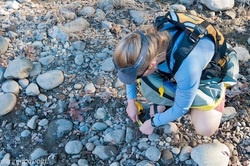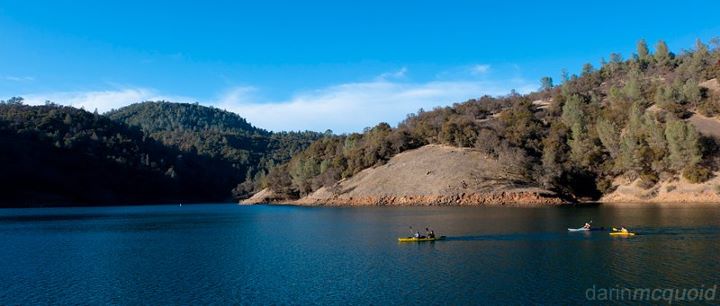
Danielle Katz and John Dye, founder and co-founder of Rivers for Change, have officially begun their 1,900 mile, human powered paddling project. Beginning in January with the lower Yuba and completing the 111 mile trip down the Russian River in February, the 12 Rivers in 2012 campaign commenced its mission to explore, source to sea, California’s most significant water sheds. As impressive as this is, it’s only the beginning for Katz, Dye, and the rest of their team. Throughout the year, they also plan to travel the Salinas, Los Angeles, American, Tuolumne, Merced, Sacramento, San Joaquin, Mokelumne, Klamath, and Feather Rivers. The adventurers are separated into two groups in order to travel the entire feasible length of each river. In the spring and summer (when the runoff is most significant), the Headwaters Team begins at the uppermost portion of each watershed – at the first runnable (Class IV and V+) stretches of river. Below, the Mainstream Team takes over to complete the long journey to the ocean.
The idea behind
12 Rivers in 2012 is that by undertaking expeditions to travel these rivers from their origins to the sea, the team will gain a comprehensive and unprecedented view of each watershed as well as garner widespread attention for the threats they face. By inviting community members along for portions of the adventure (Community Conservation Paddle Days), Rivers for Change aims to inspire participants to become advocates for their local rivers. In addition to raising public awareness,
12 Rivers in 2012 has the opportunity to collect scientific data that can be used for better understanding and thus managing these ecosystems. Realizing this potential, Katz and Dye reached out to Adventurers and Scientists for Conservation (ASC), hoping that the nonprofit could pair them with a researcher in need of data from their expedition.
ASC matched Rivers for Change with Mike Deas of Watercourse Inc., a freshwater ecologist who has been studying flow, temperature, and water quality in many of these rivers. The 12 Rivers team are collecting water samples for Deas to analyze, and algae samples which can provide important information on climate change. In addition, they will be collecting water quality samples to determine presence of various pollutants dissolved in the water column.
All of this data will provide Deas and other researchers with details concerning these critical California watersheds. With this information and the awareness raised by the feats of the adventurers, 12 Rivers in 2012 holds the potential to be a landmark for river conservation. For more information on Rivers for Change, including dates (they’re tackling the Salinas next week) and ways you can get involved, visit www.riversforchange.org. To find out more about adventurers and scientists currently or soon to be working with ASC, check out https://www.adventureascientists.org/expeditions.html.


